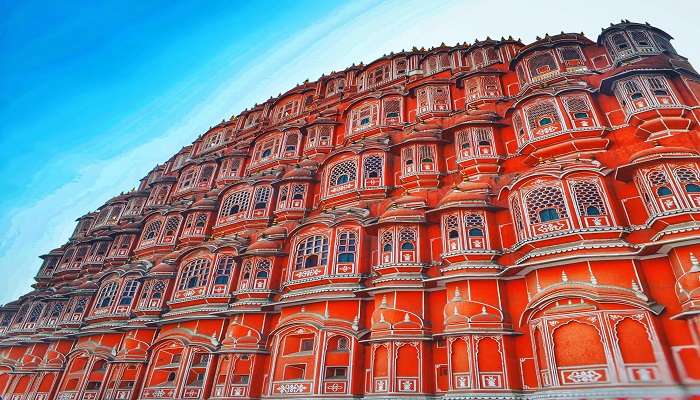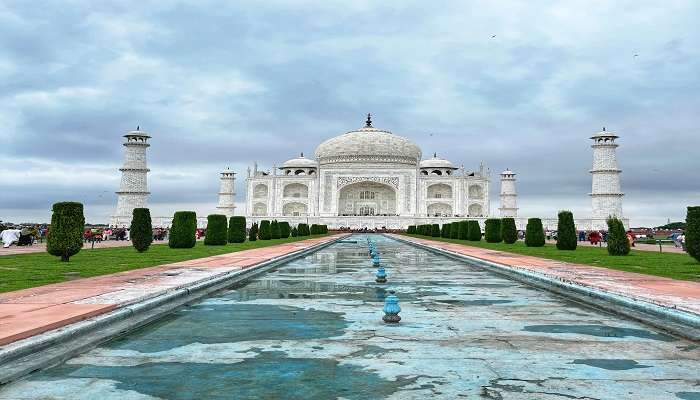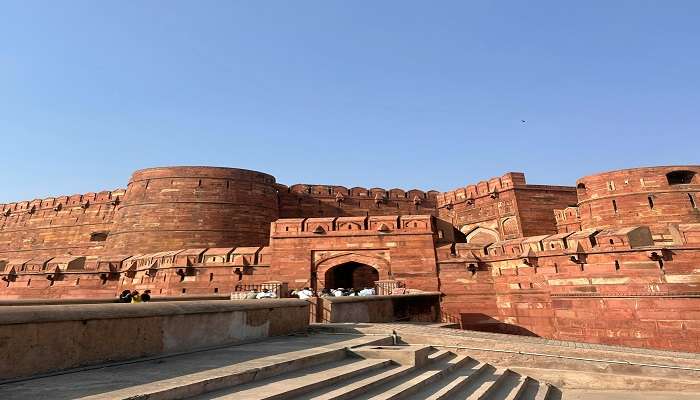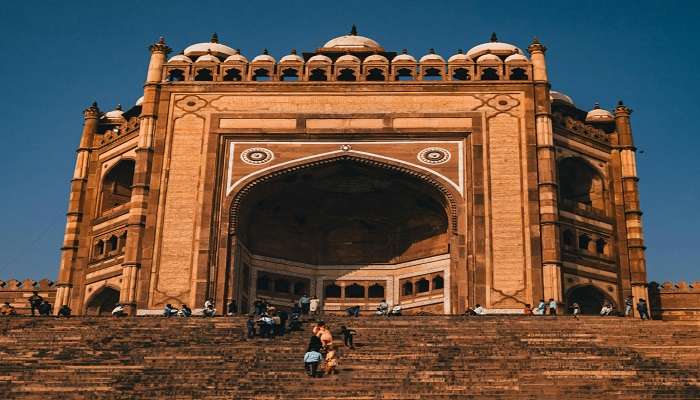Visit Gailana In 2025 The Unexplored Side Of Agra

Agra, formerly known as Gailana, is a city on the banks of the Yamuna River in the Indian state of Uttar Pradesh. Agra’s golden age began with the Mughals in the early 16th century. Agra was the most significant city on the Indian subcontinent and the capital of the Mughal Empire. It was the renewed patronage of architecture, gardens and culture that added a new essence to Agra. Under Mughal reign, Agra eventually developed into a centre for learning, arts, trade, and religion. This was prompted by the construction of the Agra Fort, Sikandra, and Agra’s most cherished monument, the Taj Mahal, which Shah Jahan built between 1632 and 1648 in memory of his wife Mumtaz Mahal. Following independence, Agra became an industrial town with a thriving tourism industry, as well as footwear, leather, and other manufacturing.
Plan A Vacation To The Historical Side Of Agra
To organise a wonderful vacation to Agra, keep the following recommendations in mind. Here is a selected list designed specifically for you to experience the city’s history.
1. Taj Mahal – The Excellence Of Mughal Architecture

Every tourist who visits Agra wants to view the Taj Mahal in its entirety. The Taj Mahal is undoubtedly the main attraction that pulls millions of tourists to Agra each year, and rightfully so. Shah Jahan built the Taj Mahal, known as the embodiment of love, for his beloved wife Mumtaz Mahal. Her tomb is directly beneath the monument’s central dome. It took 22 years and almost 20,000 labourers to build this masterpiece. Shah Jahan spent his last years imprisoned in the Agra Fort, gazing at his creation, and after his death, his tomb was put within the Taj Mahal alongside his wife.
Another amazing feature that makes it a masterpiece is its symmetry, which makes it appear the same on all four sides. When you visit, take in its stunning splendour for yourself.
Timings: 6 am – 6pm everyday except Fridays, when it is closed.
Entry Fee: INR 20 for Indians, INR 750 for foreigners
Also Read: Taj Mahal
2. Agra Fort – The Heart Of Mughal History

Another architectural gem in this city is the Agra Fort, which had been built by Mughal Emperor Akbar with the assistance of 4,000 workers who worked for eight years until its completion in 1573. The Mughal Empire’s seat was at Agra Fort, which is composed of red sandstone. Some of the most impressive constructions in Agra Fort include the Sheesh Mahal, Jahangir’s Palace, and Khas Mahal. The fort contains four enormous gates, the Delhi Gate utilised for the king’s formal entrance. Diwan-i-Khas and Diwan-i-Aam were reserved for the royal court and the public, respectively.
During the time of the Mughals, the Agra Fort was significant. Although Akbar built it, Shah Jahan refurbished it by adding marble work and transforming the rough red sandstone structure into a palace. It is spread out over 94 acres, so you will need around two hours to explore the entire monument.
Timings: 7 am to 6 pm every day
Entry Fee: Indians, INR 20; Foreigners INR 300.
3. Fatehpur Sikri – The City Of Victory

One of Emperor Akbar’s pet projects was to establish a walled city a short distance from Agra. He named it Fatehpur Sikri and governed here for a while before being forced to leave due to a lack of water supply. Nonetheless, the remaining monuments recount the story of his bravery and remarkable achievements. In Persian, Fateh means victory. The city survived, and three of its fortified sides remain intact. Akbar was particularly interested in its architecture and arrangement, and it took approximately 15 years to plan and build it altogether. Once completed, it had palaces, harems, buildings, courts, and a mosque.
Fatehpur Sikri’s most impressive architectural wonders is the Buland Darwaza, a majestic gateway to the city. The gateway is made entirely out of red sandstone. It includes 52 steps leading up to a 175-foot-high archway with two inscriptions. Birbal, Akbar’s favourite minister, also has a monument in Fatehpur Sikri named Birbal’s Palace. Because he was a Hindu, the architecture differs from the typical Mughal buildings. The Jama Masjid, a mosque designed in Indian style, was one of the first buildings built in Fatehpur Sikri. It also holds the tomb of Salim Chishti, a renowned Sufi saint. Akbar, the founder of the Din-e-Ilahi Islam, also built Ibadat Khana in Fatehpur Sikri to hold gatherings. Despite its extravagant design and careful planning, Fatehpur Sikri was abandoned in 1585, after being ruled since 1571. This occurred because the lake that supplied water to the city had dried up.
Distance from Agra: 37 km
Entry to the city: Free entry
Related Post: Places To Visit In Fatehpur Sikri
4. Akbar’s Tomb – Mausoleum Of The Greatest Mughal Emperor

Akbar was a great king who also happened to establish his own mausoleum in the town of Sikandra. This is actually an ancient Turkic custom, which was also something that the Mughals followed. Akbar’s tomb can be found in Sikandra, his final resting place. His son Jehangir finished building his Akbar’s tomb in 1613. The tomb was finely carved and constructed of red sandstone. Mariam’s Tomb, Akbar’s wife and Jehangir’s mother, lies only 1 kilometre from Akbar’s Tomb.
Timings: Open everyday from 6 AM to 6 PM
Entry Fee: Indians INR 15; Foreigners INR 110
5.Tomb Of Itimad-ud-Daulah – The Baby Taj

The Tomb of Itimad-ud-Daulah, another example of Mughal construction, was commissioned by Nur Jahan, Jehangir’s wife, for her father Mirza Beg, who was given the title of Itimad-ud-Daulah, meaning pillar of state. The mausoleum is commonly referred to as the Taj Mahal’s draft or Baby Taj because it has many characteristics with the World Wonder. It is also referred to as a jewel box because, while not as magnificent as other Mughal monuments, it is no less intricate.
The Tomb of Itimad-ud-Daulah is composed of white marble from Rajasthan and contains semi-precious stones encrusted in its walls to display various objects such as a vase, bouquet, fruits, and so on. Its construction began in 1622 and ended in 1628. A garden with pathways and water courses surrounds the monument. It is situated on the right bank of the Yamuna River and is a close duplicate of the Taj Mahal, including its interiors. Many of Nur Jahan’s relatives’ tombs are also housed in this monument.
Timings: Open everyday from 6 am to 6 pm
Entry Fee: Indians INR 10; Foreigners, INR 250.
You May Also Like To Read: Mosques In India
In this article we have given you a list of things to keep in mind for your next vacation to see the Gailana, the heart of Agra. Make sure you plan your trip to Agra and get in touch with the historic magnificence. Accompanied by your loved ones, this experience will be more rewarding as you relive the historical era with them.
For our editorial codes of conduct and copyright disclaimer, please click here.
Cover Image Credit :John Wormell for wikimedia commons
Frequently Asked Questions About Gailana
What is the best time to visit Agraa and Gailana?
November to March are usually the best months to visit Gailana and Agra. The winter season is cool and pleasant for sightseeing. Summers however can be extremely hot, and the monsoon season from July to September is best avoided because of heavy rains which can affect your plans to explore Gailana .
What are the different cultural festivals in Agra that tourists can enjoy?
In the month of February, a celebration is held which promotes and showcases a variety of the regions crafts, arts, culture, cuisine, dance and music. This is called the Taj Mahotsav or “Great Festival of the Taj”.
What are the accommodation options available in Agra and Gailana?
Tourists can find a variety of accommodations in Agra, ranging from budget hotels and guest houses to luxury resorts and heritage buildings. Some hotels include the Courtyard Agra, Hotel the Taj Vilas Agra, Fairfeild by Marriot Agra, The Oberoi Amarvilas, Jaypee Palace and more. You will find that many of these hotels are strategically located near the Taj Mahal and other historic landmarks of Gailana and Agra.
What are the shopping options in Agra?
Agra is known for its marble handicrafts, leather products, rugs, and traditional Indian sweets. Popular places for shopping include Sadar Bazaar, Kinari Bazaar, and Subhash Bazaar.
What is the list of prohibited items inside Taj Mahal?
Plastic bags, Big backpacks, Books, Eating and smoking is strictly prohibited inside Taj Mahal. Arms, ammunition, fire, smoking items, tobacco products, liquor, eatables (Toffees), headphones, knives, wire, mobile chargers, electric goods (except camera), Tripods are also prohibited.
People Also Read:
Places To Visit In Agra Things To Do In Agra Places To Visit In Agra In 1 Day

With a passion for exploring and travelling to the roads long forgotten, experience the world through enthralling stories and adventures. Join me as I share my experiences at some of the world’s most popular tourist destinations and quench that pestering curiosity with something exciting!











